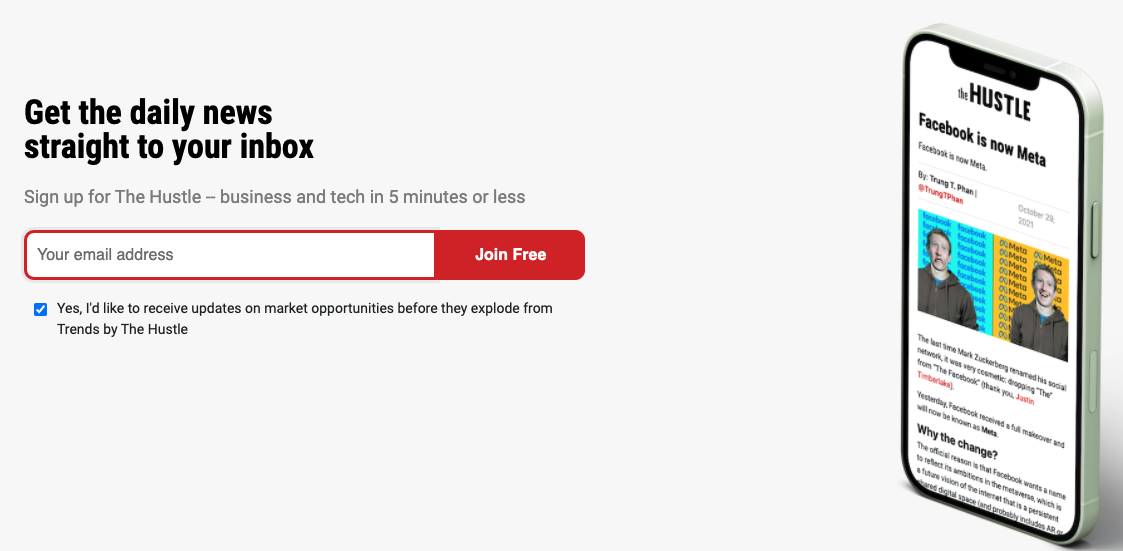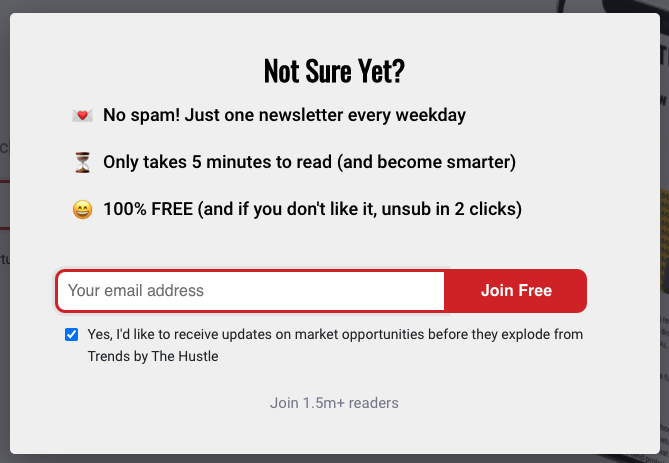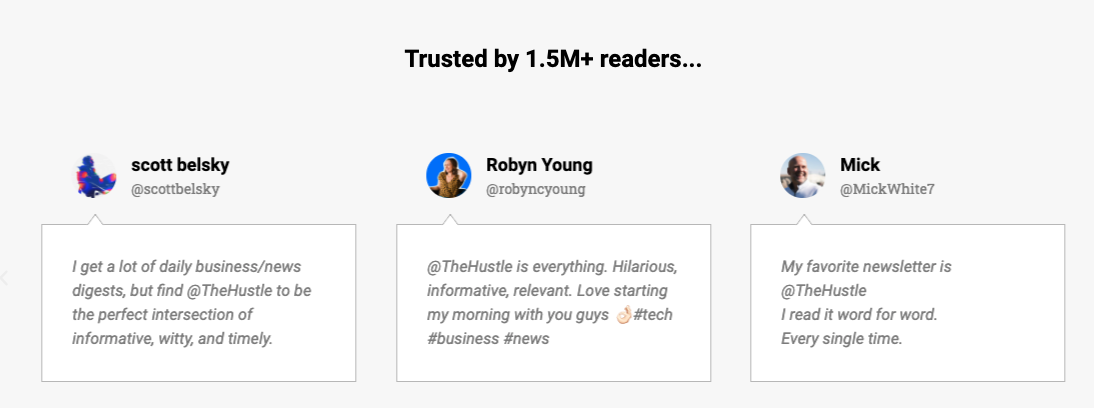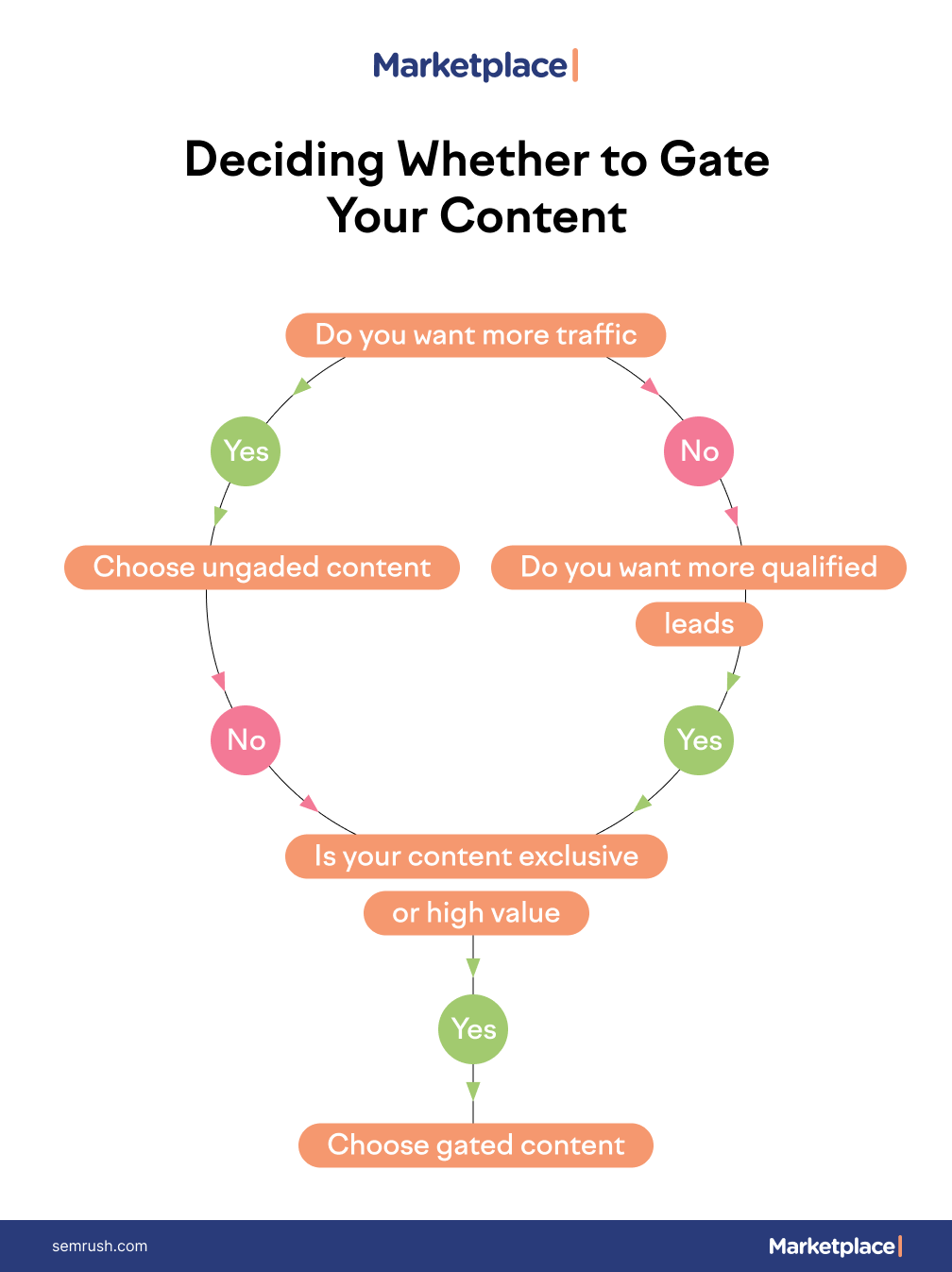How many SEO experts does it take to change a light bulb?* Enter your email address and we’ll send you the answer.
Gated content is a popular marketing tool for lead generation, especially in the B2B sector. But deciding whether to use it is not straightforward. There is often confusion around what gated content is exactly and which content should be gated. There are also some tricky pros and cons for you to contend with.
In this (un)gated content playbook, we’ll explore these conundrums and help you decide if it should become part of your tactical toolkit.
What Is Gated Content?
Gated content can only be accessed by the public through a lead capture form. Typically, a website visitor will need to provide contact details and possibly answer a few questions (e.g. name, position, organization size, etc.). They will then be granted access.
This type of content tends to be longer-form, practical, informative, or in some way noticeably “premium”. Other than requiring contact information from the person who downloads it, gated content is always free.
Marketers or the sales department might then send out a series of newsletters, an email drip campaign, conversion-oriented content, or even call up the prospect directly.
As you might expect, ungated content is freely accessible to the public and can usually be found in the search engine results pages (SERPs).
Why Is Gated Content a Controversial Tactic?
In the inbound marketing community, there is a debate around the effectiveness of gated content — and there’s a good reason for that. Ever since the first web page went live, on August 6, 1991, the internet has democratized information.
It has become second nature to look up information on Google. We scan the news, watch videos and read blog posts for entertainment or practical purposes.
Mostly this content is free and ungated, which is something people become conditioned to expect. As a result, asking your audience to fill out a form and give personal information in exchange for content feels unnatural for both marketers and website visitors alike.
So what is the real issue? First and foremost, lead capture forms add a layer of friction: It makes it harder for users to consume your content.
Adding friction is something that most content marketers take pains to avoid. As Erin Balsa, Marketing Director at The Predictive Index, writes on LinkedIn:
Gating an e-book is like putting someone in a headlock and forcing them to give you their lunch money.Not a great way to start a relationship.
Erin Balsa, Marketing Director at The Predictive Index
Erin has a great point. You usually wouldn’t start a relationship with gated content. You have to woo your readers first, showing that your content is worth their time and — later on — their personal information.
So where does gated content sit on the customer journey?
When a customer is seeking information or help, their needs fall into three main buckets (or stages), which are: Awareness, consideration and conversion.
Each is a distinct stage in the customer journey. To map out this customer journey, you need an in-depth understanding of your audience. This will help you develop gated and ungated content that solves real customer pain points as they appear.
Let’s look more closely at these stages and how they relate to gated and ungated content.
Awareness-stage Content
In the awareness stage, people have discovered a problem.Yet, generally, they do not know what solutions are available to them.
As such, users seek information. Their questions and search queries tend to be quite broad — even in B2B scenarios. For example:
How can I keep track of all of my qualified leads?If they stumble upon your website in the search results, the content they see will likely be their first interaction they have with your brand.
For this reason, most marketers avoid gating awareness-stage content (i.e. informational content that answers broad questions). You haven’t built up trust yet. More to the point, very few content consumers are ready to commit to anything at this stage in the customer journey.
Instead, it’s better to provide value and give them a reason to consider your solution.
Consideration-stage Content
In the consideration stage, the customer is aware of a number of solutions. They are now weighing their options and are looking for more specific content. They might be exploring webinars, guides, white papers or even toolkits to help them achieve their goals.
A customer question, at the consideration stage, might look like this:
What are the best CRMs for a single-person business? Webinar how to use a CRMAt this point, the customer is more focused on a particular need. This means it’s more likely that they will give up their email address and details to you. However, they will only do so if they see the value in the content you have on offer.
It’s more common to see gated content in the consideration stage, than it is earlier on in the customer journey.
Conversion-stage Content
In the conversion stage, the customer is almost ready to make a final decision or complete a purchase. Your website landing pages, pitch decks, product demos and other product-focused content come into play.
A customer question or search query at this stage might look something like this:
CRM free trial CRM product demoSome marketers use conversion-stage gated content in order to capture a lead’s phone number. Others simply include a contact form or a clear call to action.
Gated Content as a Strategy (Rather than a Tactic)
We have just looked at how gated content can be used along the buyer’s journey as a lead generation tactic. While most of your content is ungated, lead generation forms are used to cherry pick leads who are well on their way to conversion.
But there is another way to look at gated content. You could make it the basis of your entire content strategy.
The Hustle does just that. With 1.5 million subscribers, the Hubspot-owned daily newsletter has created a well-oiled gated content marketing machine.
It immediately funnels users into its CRM in an ingenious way, relying on FOMO (fear of missing out), clear value propositions, and social proof.
Breaking Down the Hustle’s Gated Content Funnel
The Hustle’s landing page establishes a value proposition immediately (and simply): “Daily news straight to your inbox”, “in 5 minutes or less”. The call to action is also simple and appealing, “Join Free”.
Alongside this, the creative shows an example of the content. The website visitor now knows exactly what to expect:

What happens if they are not convinced of the offer and bounce? There’s an exit-timed popup that tries to reinforce the value propositions more clearly, highlight the call to action, and create a sense of FOMO: Would you like to join 1.5m+ subscribers?
Even better, if they don’t like it, they can unsubscribe really easily:

Then comes the social proof. Testimonials are the icing on the cake, showing the customer experience.

Gating ALL your content like this is a bold move. While it clearly works for The Hustle, most content marketers will want to use gated content more sparingly. Let’s explore why this might be.
The Pros and Cons of Gated Content
As we’ve seen, gating your content can create intrigue and a sense of FOMO among your audience. This can be a good way to encourage them to act. But it might also scare them off. So you will need to consider a number of factors before you decide whether or not to use it.
Pros
Cons
Find the right leads
Making your content harder to access might seem counterintuitive, but people who do sign up to download it are usually more than just casual visitors.
They have an objective and your content will help them achieve it.
You’ll be building a relevant and interested list of potential clients you can later contact.
But you’ll achieve a lower reach
On the flip side, if your content is behind a lead capture form, fewer people will see it.
There is no SEO value in gated content because it is not visible to search engines.
You won’t get the same level of reach, traffic, or engagement and your best ideas may go unseen by genuinely interested leads.
Segment and target your audience more easily
When gating your content, you can ask for additional information (often in the form of a drop down list), including job title, objectives, company size, etc.
This can help you better understand who is on your email list so you can target different customer segments with follow up emails or calls.
But you’ll also capture false information
It’s impossible to stop a determined, sneaky human from getting your valuable content for nothing.
Just because you ask people for their details, it doesn’t mean they’re going to give you accurate information.
You may be given a burner or temporary email account details, fake names, phone numbers or other incorrect details.
A CRM full of Seymour Butts will hurt your data — and worse, waste your sales or marketing department’s valuable time.
Grow a mailing list
Perhaps the most compelling reason to gate any piece of content is to grow a mailing list.
Email marketing campaigns are always more successful when you have an engaged, targeted audience.
As a plus, you know what they have downloaded, and so can really button down your messaging.
But you’ll put some people off
It’s inevitable that some people, who are genuinely interested in what you have to say, will opt not to give you their details.
Sure, that’s better than giving you false information, but that’s a lost lead who won’t move closer to conversion.
For this reason, it’s important that your gated content is really compelling.
Push your audience in the right direction
Make no mistake, asking for and getting an email address is a conversion.
When someone trusts you enough to give up something of theirs, you start cementing a relationship.
If you deliver on your promises, micro-conversions like this lead to greater trust — and trust leads to paying clients.
But you’ll need to deliver
If your ungated content isn’t up to standard, you shall be forgiven.
However, if you’ve asked them to jump through hoops to get it, and it wasn’t what they wanted, they’ll feel disappointed.
You’ll have to be very clear on what should be gated and what should not be.
Examples of High Performing Gated Content
We’ve looked at gated content as a tactic and a strategy, but what kind of content is typically gated? Here are some examples that tend to do well as gated content:
Templates or Tools
In B2B environments, professionals are always looking for ways to save time, reduce the number of mundane tasks, and to make their lives easier.
If you can offer templates or tools to help your audience get through their work days more easily, they’ll love you for it. Think:
Google Slides or PowerPoint Templates Accounting spreadsheets Workflows KPI trackers and calculatorsMany people see giving up their details as a small price to pay for something that will help them with a real work-life challenge.
Subscriber-only Emails
Websites like Substack and Ghost are popularizing (and monetizing) email subscriptions. Though technically not gated content, the guiding principle is the same: The appeal lies in the fact that the content is exclusive, regular and valuable.
If you can hit this trifecta, you may well be able to build, retain and grow an audience of newsletter subscribers.
White Papers, Guides or Reports
White papers, guides, and reports are often gated. Research is a valuable commodity, but you will need to make your case. Your audience wants something that will inform and help them, rather than hard sell your solution.
Live Webinars
Webinars are a commonly gated type of content. They are appealing because they’re valuable sources of information, interactive, and have a human element.
Additionally, they tend to have an element of scarcity because there is a limited number of places.
For these reasons alone, many people are willing to give their details in exchange for a seat at the table.
Deciding Whether to Gate Your Content
It can be hard to decide whether or not to gate your content. Use this simple flow chart to point you in the right direction.

Producing Quality Gated Content
So is content in exchange for an email okay? We hope you’ve come to the same conclusion as we have. It will depend on:
Where your website visitor is in the customer journey The types of challenges or questions they have The value and exclusivity of the content Your overall content marketing strategy Whether you need more traffic or more qualified leadsThat said, the success of your gated content hinges on its quality. If you need help producing (gated) ebooks for your audience, explore the Semrush marketplace.
*Just one, but it’ll take 3 to 6 months to see any results.
Innovative SEO services
SEO is a patience game; no secret there. We`ll work with you to develop a Search strategy focused on producing increased traffic rankings in as early as 3-months.
A proven Allinclusive. SEO services for measuring, executing, and optimizing for Search Engine success. We say what we do and do what we say.
Our company as Semrush Agency Partner has designed a search engine optimization service that is both ethical and result-driven. We use the latest tools, strategies, and trends to help you move up in the search engines for the right keywords to get noticed by the right audience.
Today, you can schedule a Discovery call with us about your company needs.
Source:





